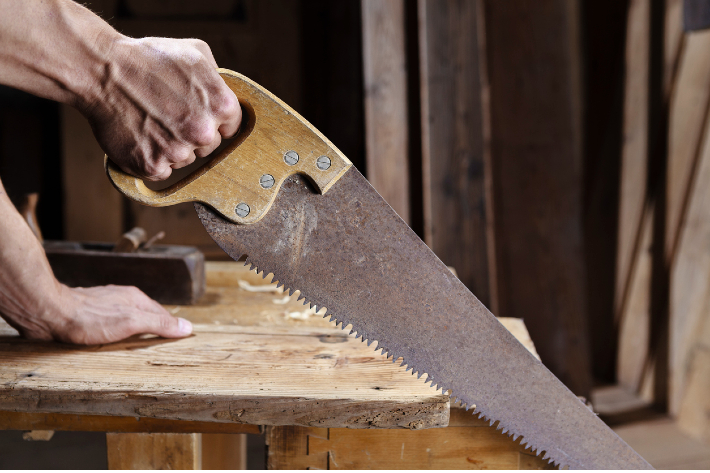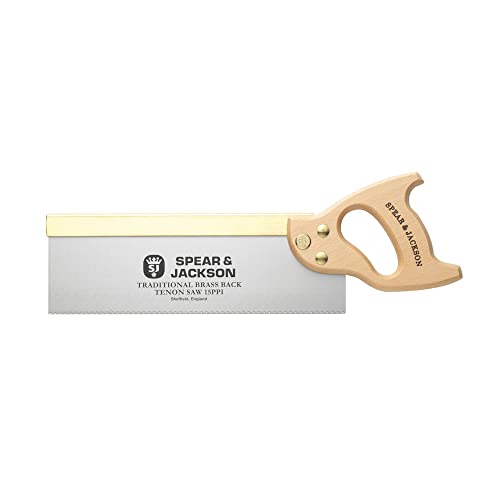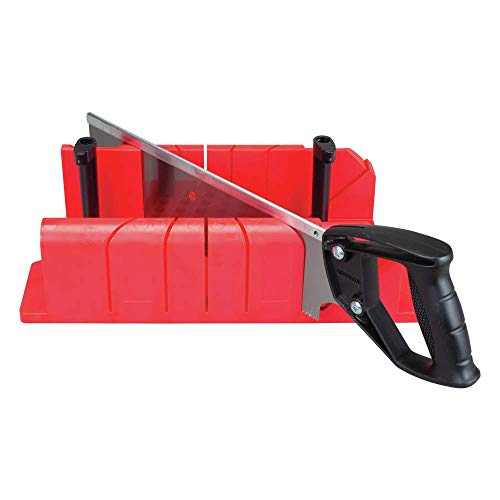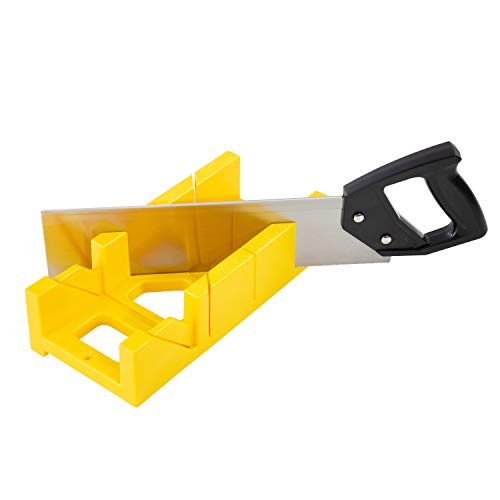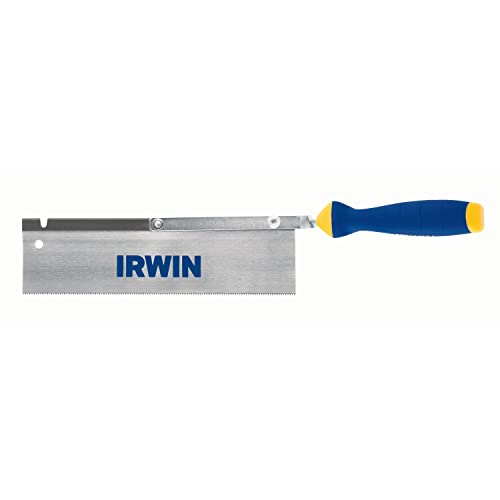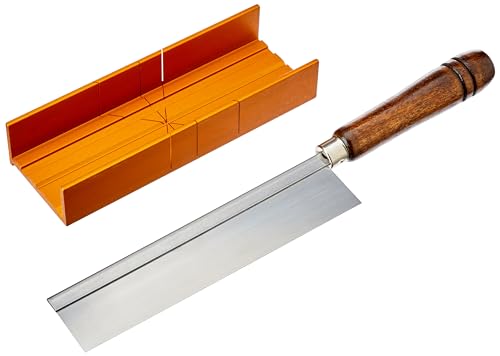- StoreProjects
- Free Plans and Projects
- Furniture Projects
- Jigs And Fixtures Projects
- Shop Projects
- SketchUp Models
- Shop Storage
- Workbenches
- Free Woodworking Downloads From Lee Valley
TechniquesToolsVideos- Premium Streaming Video Site
- Experts Guide to Gluing & Clamping Wood
- Mastering Built-In Furniture
- Simple Live-Edge Slab Table
- CNC – Designed for Woodworkers
- Milling Your Own Lumber
- Advanced Bandsaw Techniques
- I Can Do That! – Simple Woodworking Projects
- Woodwright’s Shop with Roy Underhill
- Tricks of the Trade
BlogOur content is meticulously curated through independent research, testing, reviews, and AI-driven recommendations, all designed to present you with the finest product choices. When you make a purchase through our links, it could result in us earning a commission.Get the Best Backsaws for Precise Woodworking Projects
Last updated: 6 Apr 2024
Our Top Picks
- Best Overall: Spear & Jackson Back Saw Shop Now ➔
- Great Value: CRAFTSMAN Miter Box & Saw Shop Now ➔
- Most Ergonomic: GreatNeck Backsaw with Box Shop Now ➔
- Ideal for Professionals: IRWIN Dovetail BackSaw Shop Now ➔
- Great Performance: Olson 35-241 Backsaw Shop Now ➔
View all ContentsTop Backsaw of 2024 Reviewed in Detail
Best Overall
The Spear & Jackson Back Tenon Saw is an excellent choice for rapid, clean woodcutting. It’s such a great option, in fact, this machine has snagged our coveted “best overall” award, owing to its sturdy construction and consummate reliability. This product features a 12-inches blade with 15 TPI and a universal tooth shape. The unique combination makes it efficient in performance, regardless of its compact size. However, the teeth might need a little resharpening before use. That said, the back tenon saw is quite easy to use and takes mere minutes for modifications.
It also comes with a brass back, providing maximum rigidity so your tool will never shake when sawing. The use of three rivets fixes the wooden handle and the blade together, further reinforcing stability. And, it makes the grip more comfortable and safe. So, you can create accurate cuts in all types of materials without any hassle. What’s more, the blade is made of premium carbon steel, capable of withstanding years of intensive use.
Pros
- Sturdy
- Rigid grip
- Easy-to-use
- Great cutting performance
Cons
- Not ready to use
Great Value
If you’re a DIYer looking for a backsaw for making fine angled cuts, then this Craftsman Miter Box & Saw package is the perfect option. This combo offers you a high-quality backsaw with a 12-inch blade (12 TPI). Its sturdy plastic handle has a rugged surface, providing a firm grip. And, you can use this saw to cut woodblocks precisely and reliably.
There is also a miter box included, allowing you to create multiple accurate angled cuts in any wood, including 45 degrees and 90 degrees. You can also cut 22.5 degrees and 45 degrees face angles for octagonal shapes. And, this model features an extended lip and a built-in stop, preventing the saw from cutting into the box. However, since the blade is extremely sharp, the material may shed off with each stroke. Further, the manufacturer has integrated storage bins in the box for holding pencils and cam pins.
Pros
- Fine, angled cuts
- Easy storage
- Comfortable grip
- Miter box included
Cons
- Very sharp blade
Most Ergonomic
The GreatNeck BSB14 Backsaw has a 14-inch long and 3-inch wide blade. These dimensions, coupled with 12 TPI, enable it to cut both soft and hardwoods smoothly. The reinforced steel blade has a straight edge too, ensuring the blade remains still and straight as you saw through woodblocks. That said, the backsaw requires frequent resharpening. Also, the high-impact plastic handle provides a comfortable and secure grip, you won’t have to worry about the saw slipping or cracking under pressure.
Additionally, this product comes with a compact miter box (12 inches). It has a preset cut for 45 and 90-degree angles, enabling you to cut finely. There is also an 8½ inch built-in ruler on the edge, improving measurement accuracy. All in all, it doesn’t matter whether you’re cutting, trimming, or molding. The GreatNeck BSB14 Backsaw with Box is a versatile device making woodworking easier and a lot more fun.
Pros
- Versatile cutting
- Durable
- Firm grip
- Miter box included
Cons
- Not very sharp
Ideal for Professionals
Innovative and versatile – the IRWIN Dovetail Backsaw has a competitive profile for the price point. This product is a dovetail backsaw, using a spring-loaded metal blade. You can reverse it to the left and right for cutting surfaces efficiently. The 10-inch long and 2-inch thick metal blade has 14 TPI, allowing you to try a variety of cutting styles, ranging from straight to angled. So, there is no woodworking project you can’t handle with this backsaw.
This saw also features a pro-touch handle made from high-quality plastic. And, it has a textured surface, ensuring optimum comfort and firmness. So, your hand won’t slip despite any level of sweating. Overall, the IRWIN Dovetail Backsaw is a versatile and professional tool. Therefore, beginners and DIYers with no experience in backsaw handling may find it tricky to use.
Pros
- Innovative design
- Wide and deep cuts
- Ergonomic comfort
- Sturdy
Cons
- Not for beginners
Great Performance
Do you create detailed, small-scale woodworking projects? If so, the Olson 35-241 Backsaw is the ultimate solution for cutting all sorts of materials. It features a 6½ inch long and a 1-3/16 inch deep metal blade. Using this product, you can create flawless deep cuts into small wood blocks. The blade has 42 TPI, further enhancing its performance.
Although the blade alignment is straight, you might want to use this backsaw with extra safety and stability measures. Because the sturdy wooden handle has a smooth surface, there are no curves, grooves, or rugged edges to ensure your grip remains firm. Nonetheless, this backsaw is still an ideal option due to the included miter box. This compact box allows you to steady the blade and make clean cuts. Plus, it comes with slots for 45, 60, and 90-degree angles, allowing you to make both angled and straight cuts.
Pros
- Sharp & precise
- Long-lasting build
- Miter box included
- Ideal for detailed woodwork
Cons
- Lack of a firm grip
Buyer’s Guide: Finding Your Great Backsaw
What Are Backsaws Used For?
A backsaw is a specialized handsaw with a rectangular blade and reinforced spine. A metallic or wooden piece runs along the top edge, securing the blade into place. As a result, the blade remains stable and stays straight during cutting.
Their blades are also typically shorter than most handsaws. So, the combination of a short blade and reinforced spine provides you with better control over the saw. The lack of shakiness enhances the precision and accuracy of cuts.
Although you can cut a variety of materials with a backsaw, it’s most popularly used in woodworking projects. And, it doesn’t matter whether your project is large or small scale, you can use these products to cut tenons, dovetails, joints, and miters.
Types of Backsaws
There are two important types of backsaws in terms of functionality; crosscut and rip saws. Both have teeth set, or bent, in the opposite direction of the blade. However, there are slight differences in design, making them suitable for different purposes. Let’s look at them in detail.
Cross-cut saws
The cross-cut saws have teeth angled towards the inside of the edge. This sharp-tilted edge enables the saw to cut through materials almost effortlessly. So, you can use these saws for cutting across wood grain easily.
Rip saws
Rip saws have straight pointed teeth, making them function like chisels. They scrape wood instead of slicing it, allowing you to cut with or towards the grain.
That being said, manufacturers have started creating more versatile backsaws. These backsaws have universal or hybrid teeth capable of cutting wood in any direction. Using these modern versions, you do not need to take care of the grain.
Choosing the Ideal Backsaw for Your Needs
We have already reviewed the top-rated backsaws available on the market. But, in case none of those seem suitable, don’t worry, there are still a ton of options. Feel free to shop for yourself, just remember to keep the following factors in mind!
Backsaw style
Dovetail, tenon, razor – a lot of these terms will come up in your search. These are not types of backsaws but rather styles influencing their efficiency. Here are the differences between them:
Gent’s saw
A small, multipurpose backsaw that’s 6 to 10 inches long, usually with a crosscut blade and a straight pistol-grip. This saw is perfect for model-making and detailed woodworking.
Dovetail saw
As the name suggests, dovetail saws are specialized tools for making dovetail joints. These 8 to 10-inch long saws feature sharp rip teeth with thin blades. So, you cannot use them for cutting wood more than ¾ inch square.
Tenon saw
Tenon backsaws are in the medium to the large saw range. Their rip blades can be anywhere from 12 to 16 inches long. And, you can use them for sawing tenons and slicing deeply into the wood grain.
Carcass saw
This is a crosscut backsaw coming with a typical 12 to 14-inch long blade. People often describe it as a hybrid between tenon and dovetail saws. And, they may be right because you can use this saw for a variety of small cross-cutting tasks, just like tenon saws.
Razor saw
Razor saws feature small crosscut teeth and disposable blades. The smallness of the teeth makes them impossible to resharpen, which is why you can only use these saws for a certain amount of time. Nonetheless, the sharp-toothed design is still ideal for cutting softwoods.
Measurements
Although a backsaw’s style has a great impact on its dimensions, you should go through product details, and analyze them separately. The length, width, and thickness of a blade determine the cut type. For example, you will require a thicker and wider blade to create deeper, wider cuts.
Similarly, fine woodworking demands thinner and smaller blades. So, consider the woodworking projects you plan to do, and select accordingly.
Teeth per inch (TPI)
The number of teeth on each inch of a backsaw’s blade determines two important factors, including relative smoothness and the speed of cutting. As a general rule, saws with larger and fewer teeth per inch tend to be faster than versions with more abundant smaller teeth.
However, speed can compromise smoothness. While saws with more and smaller teeth mean slower cutting, they promise optimal results. So, we highly recommend getting a backsaw between 12 to 20 TPI (a higher TPI will produce slower but better results).
Blade material
Most blades are made of stainless steel or brass, though they aren’t especially resistant to damage. If you want a long-lasting blade that can withstand a great deal of abuse, opt for high carbon steel. These backsaws may come at a higher price, but their longevity is more than worth it.
Handle ergonomics
The handle of a backsaw can be straight, curved, or a hybrid. You can choose any option depending on your comfort preferences. Usually, opting for a curved or hybrid handle is recommended.
These ensure you can maintain a firm and stable grip. Further, select a saw with a slightly rugged or textured surface. The roughness increases friction, reducing slipping while you work.
Vintage and Newer Backsaws
Vintage backsaws refer to traditional and antique versions. Typically, people pass them down across generations as heirlooms, but you can also purchase them. These backsaws are quite sturdy and fine.
However, they come at a premium, often ranging from $150-$300. In some cases, you may even have to resharpen and service a saw before using it. So, if your budget allows for it or you’re just passionate about antique collectibles, purchase a vintage backsaw.Otherwise, it’s best to choose modern backsaws that are less expensive and just as reliable. And, new backsaws are also readily available. So, you won’t have to go to several stores trying to find a specific model.
Backsaw FAQ
What material do backsaws cut?
Generally, people use a backsaw for cutting wood. But, as the blade is sharp, a backsaw can cut several different materials, including metal, plastic, and even fiberglass.
How much does a backsaw cost?
A backsaw is a necessary woodworking tool that doesn't cost a great deal. You can find a high-quality backsaw for $20-$30 easily. For vintage versions though, you can expect prices to rise to around $150 per saw.
How to use backsaws properly?
The correct way to use a backsaw involves a three-finger grip technique. With this, you need to extend your index finger alongside the handle, helping you cut straight using your index finger as a guide.
Article Contributors
Read More About Popular Woodworking Reviews Team HereThe Popular Woodworking Review Team’s product reviews and comprehensive guides are here to help you select the best gear and tools to efficiently complete top-quality woodworking projects.
Popular Woodworking is reader-supported: When you buy through links on our site, we may earn an affiliate commission. Artificial Intelligence (large language models) may have been used in the research and creation of the content.
Questions about product testing or a specific articles should be sent to aimperiapt@gmail.com
Related Content
The Best Band Saws for DIY Cutting Projects A Cut Above the Rest: The Best Spiral Saw Blades of 2024 5 Best Oscillating Saws for Easy, Clean Cuts Learn To Use a Japanese Pull Saw for Your DIY Projects The Best Sliding Miter Saws for Fast and Precise Cuts Slice Wood Cleanly With the Best Cordless Chainsaws

